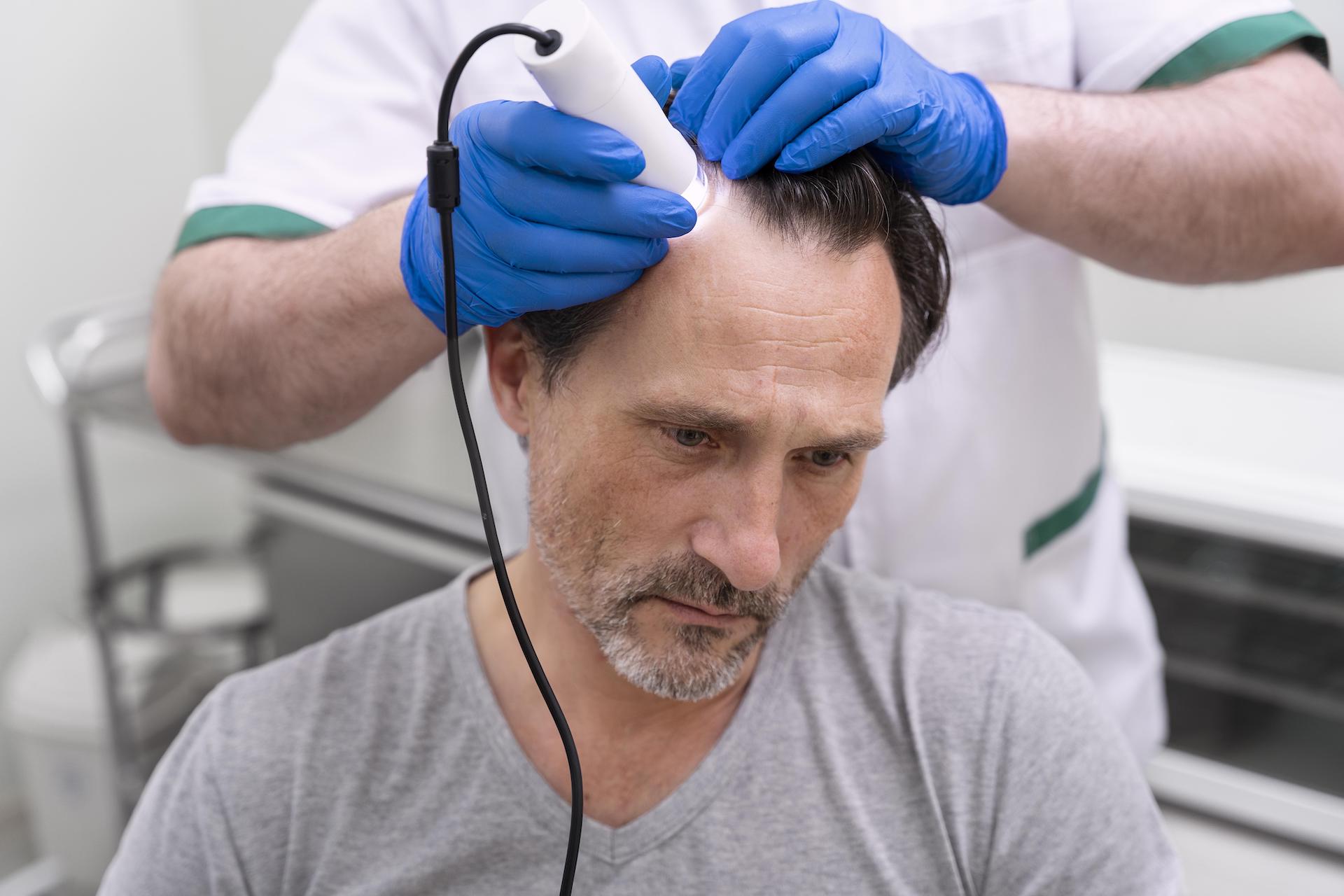Hair Transplant

Hair transplant treatment is a surgical procedure designed to address hair loss by relocating healthy hair follicles to areas affected by thinning or baldness. Hair loss can result from genetic factors, hormonal changes, stress, nutritional deficiencies, or health issues, and hair transplant aims to provide a permanent solution for restoring natural hair growth.
An average hair transplant procedure includes the following steps:
Hair Transplant Surgery: In this procedure, hair follicles are harvested from a donor area, typically the back of the head, and transplanted to the thinning or balding areas. This surgical method aims to provide natural-looking and permanent hair restoration.
FUE (Follicular Unit Extraction): FUE involves individually extracting hair follicles from the donor area and implanting them into the recipient area. This minimally invasive technique leaves minimal scarring and allows for a quicker recovery.
DHI (Direct Hair Implantation): DHI involves extracting hair follicles from the donor area and implanting them directly into the recipient area using a specialized pen-like tool. This technique provides precise control over the angle and depth of each follicle, often resulting in a more natural appearance and quicker recovery.
PRP (Platelet-Rich Plasma) Therapy: PRP therapy involves drawing a small amount of the patient’s blood, processing it to concentrate the platelets, and then injecting the PRP into the scalp. This treatment aims to stimulate hair follicles and promote hair growth.
Mesotherapy: Mesotherapy involves injecting a mixture of vitamins, minerals, and other nutrients directly into the scalp to nourish hair follicles and stimulate hair growth. It is often used in conjunction with other treatments for enhanced results.
Stem Cell Therapy: Stem cell therapy uses stem cells derived from the patient’s own body or other sources to regenerate and repair hair follicles. This innovative approach aims to revitalize hair growth and improve hair density.
Exosome Therapy: Exosome therapy involves using exosomes, which are tiny vesicles released by cells, to deliver growth factors and other proteins that promote hair follicle regeneration and hair growth. It is a cutting-edge treatment that supports cellular repair and rejuvenation.
Post-Operative Care: After a hair transplant, specific care instructions are provided to ensure proper healing and maximize the results. This includes avoiding strenuous activities, following a prescribed medication regimen, and maintaining scalp hygiene.
Consultation and Personalization: The treatment plan is tailored to individual needs based on factors such as the extent of hair loss, donor hair availability, and overall health. A thorough consultation with a hair transplant specialist helps in determining the most appropriate technique and setting realistic expectations.
Hair transplant offers a long-term solution for hair loss, providing a natural and permanent restoration of hair growth.

